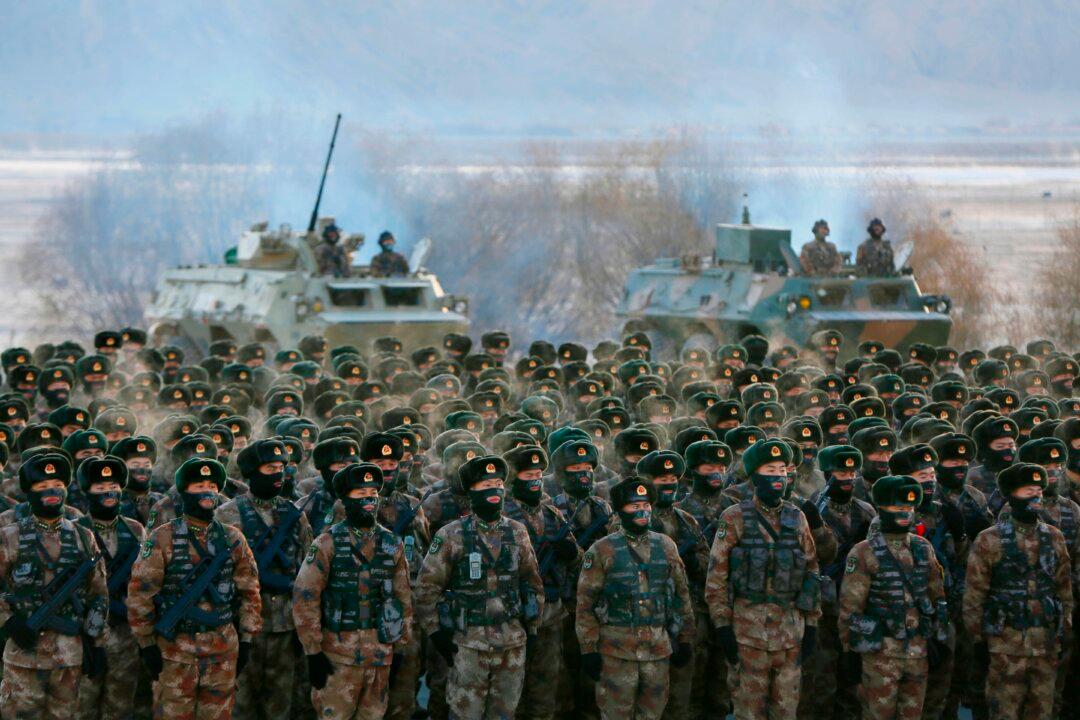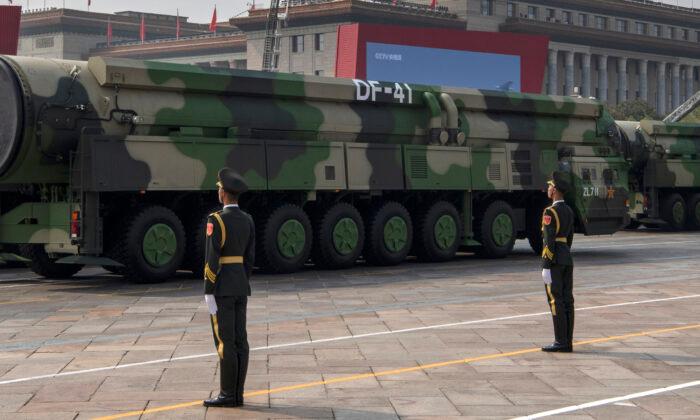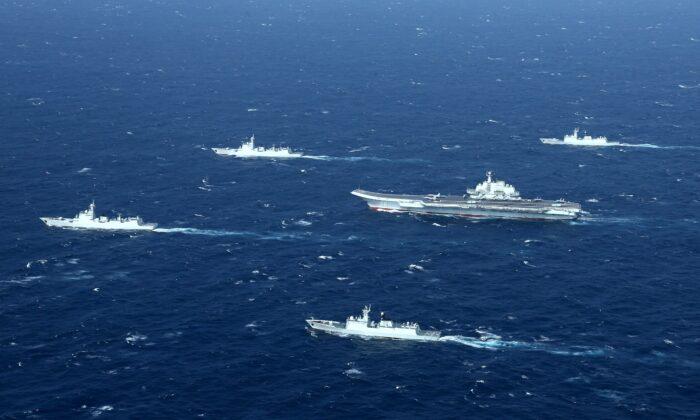From the war in Ukraine to the horrific terror attack on Oct. 7, 2023, and the subsequent conflict in the Middle East to the roiling waters of the South China Sea, the world today is in crisis. The causes are not found in Moscow or Tehran alone but primarily in Washington and Beijing. They are the consequence of two fundamental and interrelated grand strategic mistakes made by the United States: first, the failure to understand the threat from the People’s Republic of China (PRC) and second, the failure to balance against it. As a result, the United States is at risk of losing its dominant position to an emboldened PRC working in cooperation with Vladimir Putin’s Russia and the mullahs in Iran. Surveying the global unrest, Americans must comprehend three reasons why they face this dire strategic landscape.
First, U.S. elites did not perceive the threat because of the triumphalism of the “End of History”—the false assertion that modernizing nations like China were on the path to democratization and free market economics. Great power conflict was seen as an artifact of the past. This hubris contributed to what we term “threat deflation,” in which year after year, U.S. decision-makers consistently dismissed or underestimated the threat from the PRC.
Second, U.S. business interests and financiers indefatigably sought economic gain from cooperation with Beijing. This facilitated China’s rise as it entered the West’s economic ecosystem, as did its admission to the World Trade Organization.
Their influence on the major U.S. political parties and at the highest levels of U.S. politics hindered the U.S. response and promoted the conceit of globalization. Thus emerged an “engagement school,” which asserted that by engaging the PRC, it would become wealthy, a “responsible stakeholder” in the international order, and even democratic. In essence, the United States willingly and enthusiastically taught, trained, and even equipped its mortal enemy. Business interests and financiers funded our national security think tanks that contributed to a bias toward the engagement school and thus to the threat deflation of the PRC.
Third, Deng Xiaoping, arguably one of the greatest strategists of the 20th century, advanced a brilliant political warfare strategy to promote threat deflation. Deng’s strategy focused on U.S. and other Western elites, enriching them and shaping their perception of the PRC and of the Chinese Communist Party (CCP) while using the enticement of a growing market to influence their behavior. For a generation, Chinese leaders masked their intentions and framed their expansion as economic, for the good of all, rather than strategic and for the benefit of the CCP.
Consequently, the PRC has risen and now employs its power to the detriment of U.S. national security through its worldwide actions, especially in the East and South China Seas and Taiwan, as well as through its proxies in Iran and Russia.
To meet this threat, Washington first needs to see communist China for what it is: an aggressive great power that seeks the overthrow of the United States.
Second, the United States must support the education of strategists so younger generations may understand how to defeat the PRC. Education in the principles of power politics and the CCP’s ideology are essential to achieve victory.
Third, there must be sustained presidential leadership to define the enemy, educate the American people, and generate the necessary whole-of-government response.
Fourth, the failure of the intelligence community to identify China as an existential threat greatly weakened the ability of American national security decision-makers to identify and act against the threat. The fundamental assumptions regarding China’s behavior were informed by the engagement school of thought. Ultimately, and perversely, the intelligence community was aiding threat deflation for a generation. This must be reversed.
Fifth, U.S. military leadership did not recognize and prepare for China’s emergence as a formidable military power. It must also be held accountable for the current state of unpreparedness. Specifically, the failure of the U.S. Navy’s leadership to recognize the centrality of the maritime domain to the PRC’s grand strategy and its naval modernization efforts stands in stark contrast to the proactive performance of prior generations of admirals from World War II through the Cold War with the Soviet Union. Leadership needs to prioritize rebuilding the U.S. Navy to meet the PRC threat.
The United States aided the rise of its enemy. Now the Kremlin and Iran are operating in the strategic space that the PRC provides them. That space and Beijing’s aggression will only increase if the United States does not act to end its threat deflation, break the chokehold of the engagement school on the U.S. foreign policy establishment, and defeat the CCP by evicting it from power.








